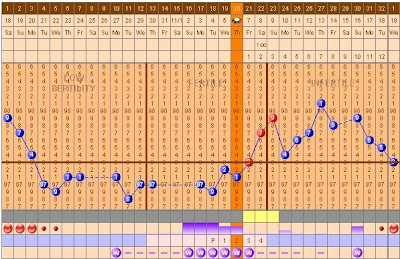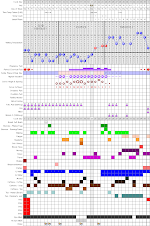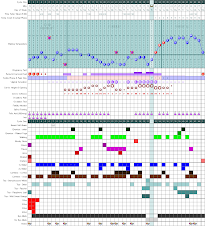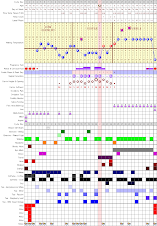Soon after my last post, my husband and I achieved pregnancy (hoorah!) so for the last nine months I've been enjoying sleeping soundly with my eye mask on, not being too particularly concerned about the phases of the moon and not having to worry about nightlighting or ovulation. My pregnancy has been relatively easy, with few concerns and no major complications.
I am currently 39 weeks and 3 days pregnant, and -- how 'bout that! -- tonight is a full moon!
Theories about labor, childbirth, and the moon abound, so I thought I would jump back into my Lunaception blog by sharing some of my research and findings. Here are a few things that I discovered:
One researcher's observations:
A statistical analysis of the distribution of births in the lunar month shows that more are born between the last quarter and the new moon, and fewer are born in the first quarter of the moon. The differences between the distribution observed during the lunar month and the theoretical distribution are statistically significant. LINKIntrigued, I decided to do a little research of my own, and found within my own family history some interesting results when comparing birth times and moon phases (disregarding any known inductions).
SPRING BABIES --
Of eleven of my relatives (across four generations) born in the spring months (March through May), I found that
- eight (73%) were born during waxing moon phases
- six (55%) were born between the new and first quarter moons (waxing crescent)
- five (45%) were born on or within five days of the new moon
AUTUMN BABIES --
Of twelve of my relatives (across four generations) born in the autumn months (September through November), I found that
- eight (67%) were born during waning moon phases
- six (50%) were born between the full and last quarter moons (waning gibbous)
- six (50%) were born on or within five days of the full moon
I did not have enough data for summer or winter months to really define any patterns. So what does this all mean? Well, it may mean that there's some truth to the idea that babies are more likely to be born in certain moon phases. Of course, one must take into consideration -- as we've seen in Lunaception -- that some people are more likely to be affected by the phases of the moon, which could easily account for the way-out-there anomalies, like having an autumn baby at the new moon, instead of near the full moon.
Another interesting observation which one researcher made was that
in cases where the water breaking marks the start of childbirth, full moon is the time when it's most likely to happen. LINKSo HOW would this work? The theory goes that just as the moon pulls on the earth's oceans creating the tides, that it also has an effect on the body of water known as the amniotic sac in a woman's womb. The times when the tides are the strongest are known as the spring (not having to do with the season!) tides, and happen to occur -- you guessed it -- during the new and full moons. During these times, then, women's amniotic sacs have greater pressure on them and are more likely to break. It's also been suggested that women experience more contractions around the full moon, possibly for the same reason.
For me, I'm hoping that I will follow the autumn pattern presented above with this child, and go into labor soon after tonight's full moon. I do plan on skipping my eye mask tonight, and for at least a few days following if I'm not already in labor by then. It can't hurt!









